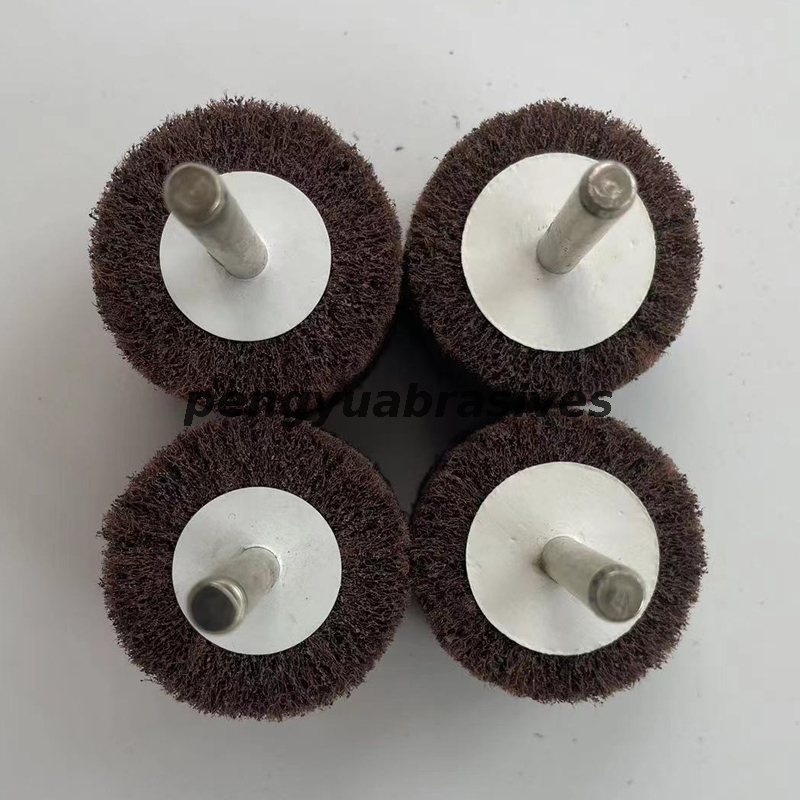Views: 0 Author: Site Editor Publish Time: 2025-05-20 Origin: Site








Ever tried sanding a curved wooden surface with regular sandpaper? It's frustrating, inconsistent—and slow. If you're into woodworking, furniture building, or restoration, you've probably wondered: Can a flap wheel help here? Yes, it can. And it might change how you work with wood.
In this post, you'll learn how flap wheels can be used to sand wood effectively. We'll cover grit types, surface finishes, tool options, and performance comparisons. Let's get into it.
A flap wheel is made of overlapping abrasive sheets attached to a central hub. Unlike traditional sanding discs, it adjusts to curves and edges. That's a big deal when you're working on shaped or carved wood.
Why do woodworkers love flap wheels?
They're flexible and follow contours.
They offer consistent pressure, so results stay even.
They remove material quickly but gently.
Flap wheels are used in sanding, polishing, shaping, and deburring. They work on all kinds of wood—from pine to oak—and help finish wood before sealing or staining.

Absolutely. Whether you're prepping a raw piece for staining or removing saw marks, a flap wheel is up for it. Here's how it works in different tasks:
Smooth out rough lumber or reclaimed wood.
Soften sharp edges so paint or stain sticks better.
Eliminate splinters from cuts or router passes.
Buff out minor scuffs and blemishes before finish coats.
Refine the surface before applying a topcoat or lacquer.
| Type | Recommended For | Notes |
|---|---|---|
| Flexible Flap Wheels | Contoured surfaces | Follows curves and edges without gouging |
| Ceramic Flap Discs | Hardwood, aggressive sanding | Cooler cutting and 3x longer lifespan than zirconia |
| Zirconia Flap Discs | General sanding of hard and soft woods | Fast cut rate, moderate lifespan |
| Aluminum Oxide Flap Discs | Light-duty work on softwood | Budget-friendly, okay for pine and fir |
| Self-Feeding Flap Sanders | Cabinet doors, moldings | Maintains even pressure automatically |
| Wood Type | Performance |
|---|---|
| Pine | Quick removal, may clog with resin |
| Oak | Needs aggressive but cool sanding |
| Maple | Tough, polish with fine grit |
| Walnut | Smooth finish, medium removal |
| Reclaimed Wood | Inconsistent texture, rough spots |
Wood moldings often have decorative contours. Flap wheels gently follow these shapes, removing loose fibers and prepping for stain.
Old varnish or paint? A coarse flap wheel strips it clean. Then move up to finer grits for that silky smooth touch.
Live edge slabs can be tricky. A flap wheel hugs the bark or rough edge, removing debris while preserving the natural shape.
Sanding by hand around detailed carvings takes forever. Flap wheels speed up the job—especially with a flexible shaft tool or die grinder.

Coarse (40–60): Remove lots of material
Medium (80–120): General shaping
Fine (150–240+): Final finish before stain or topcoat
Use an angle grinder, drill, or bench grinder. For variable control, pick tools with adjustable speed.
Secure your workpiece
Use dust collection if possible
Put on safety gear (glasses, mask, gloves)
Apply light pressure. Let the flap wheel do the work. Keep it moving to avoid hot spots or uneven patches.
Work from coarse to fine. Don't skip too many steps—it'll show in the finish.
Resin builds up fast, especially in pine. Solution: Use zirconia discs or ceramic flaps with open backing for airflow.
Too much speed or pressure? Slow down and ease up. Keep the wheel moving. Avoid staying in one spot.
Often from skipping grit sizes. Use progressive steps and consistent motion.
Yes—you can absolutely use a flap wheel to sand wood. From rustic tables to high-end cabinetry, it's a flexible, fast, and reliable tool. Whether you're a weekend DIYer or pro builder, flap wheels help finish wood better and faster. With the right disc and technique, you'll skip the hand fatigue and get a cleaner, more even finish.
Looking to elevate your woodworking game? Explore Pengyu's premium flap wheels—engineered for precision, flexibility, and durability. Perfect for any workshop aiming for smoother, faster, cleaner results.
Q: Can I use a flap wheel on a softwood like pine?
A: Yes, but use open-backed flap wheels to avoid clogging from resin.
Q: What's the best grit to start sanding rough wood with a flap wheel?
A: Start with 40 or 60 grit, then work up gradually to finer grits like 180 or 220.
Q: Are ceramic flap discs really better for hardwood?
A: Absolutely. They stay cooler, cut faster, and last up to 3x longer than zirconia.
Q: Can flap wheels be used with a standard drill?
A: Yes, just make sure the wheel matches the shank size and your drill's RPM range.
Q: Will a flap wheel damage the wood if used too aggressively?
A: It can. Always apply light pressure and use the proper grit for the task.